


 |
 |
 |
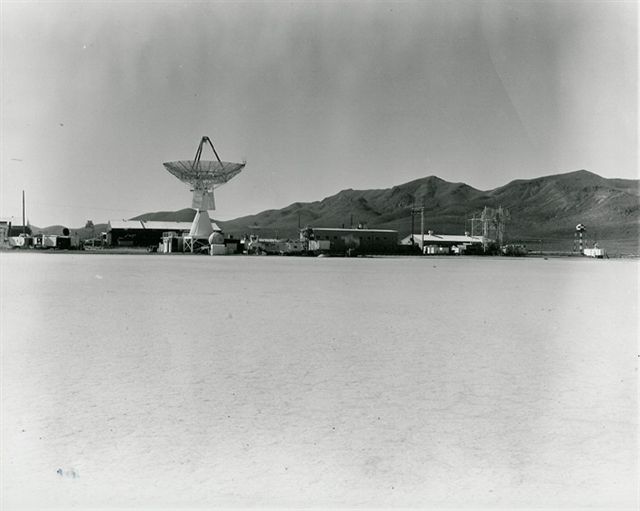
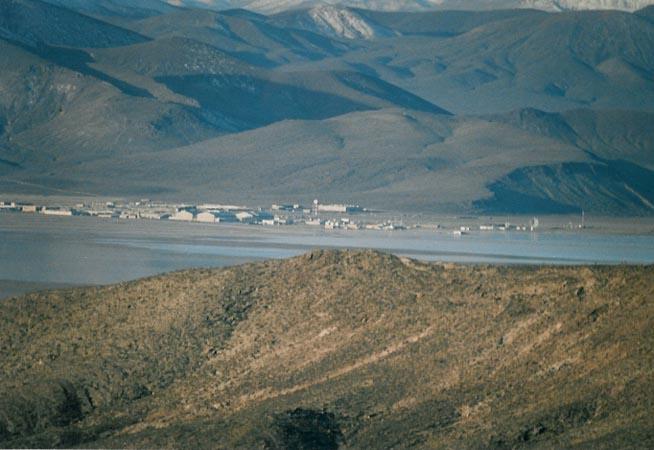
GROOM LAKE
A dry pluvial lakebed of parched clay, its alkaline surface smoothed to glass-like flatness from desert winds sweeping water from winter rains back and forth in a timeless cycle over a period of fifteen million years.
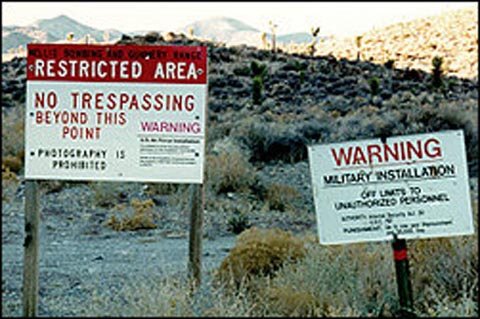 |
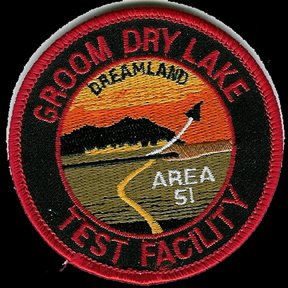 Patch designed by Glenn Campbell |
A desert region sparsely populated with poisonous, spiny reptiles, insects, plant life, and for a short evolutionary period, the U-2 Dragon Ladies and the A-12 Archangels of THE ROADRUNNERS.
Prompted by the Cold War era that began immediately after World War II, the CIA was given the task of developing strategic means of determining the military strength of its enemies. Kelly Johnson, an aircraft design and engineering genius running a special design team within the Lockheed Aircraft Company called the "Skunk Works" was asked to design the U-2 to gather intelligence on Soviet bomber and inter-continental ballistic missile bases in the Soviet Union.
Seeking a place to test the U-2 in secret far from the prying eyes of would-be spies and the public, Johnson settled on Area 51, a remote site in the uninhabitable Nevada desert that had served the military as a remote place to test weapons for quite some time. Nellis Air Force Base, a few miles north of  Las Vegas, and the AEC's (Atomic Energy Commission) Nevada Test Site (NTS) composed over
Las Vegas, and the AEC's (Atomic Energy Commission) Nevada Test Site (NTS) composed over 1,300 square miles used to set off hundreds of atomic explosions during the early days of the Cold War. Tony LeVier, the pilot assigned by Johnson to find a suitable location, found several remote spots, but chose Groom Lake because of the mountainous perimeter it furnished a dry lake bed that would provide the ultimate runway. Located within Area 51 of the Nevada Test Site, the base came to be known simply as "Area 51".
1,300 square miles used to set off hundreds of atomic explosions during the early days of the Cold War. Tony LeVier, the pilot assigned by Johnson to find a suitable location, found several remote spots, but chose Groom Lake because of the mountainous perimeter it furnished a dry lake bed that would provide the ultimate runway. Located within Area 51 of the Nevada Test Site, the base came to be known simply as "Area 51".
Nuclear tests from the 50's into the 60's caused several evacuations from Area 51. A bomb with the code-name HOOD, part of the 1957 Operation Plumbob, caused substantial damage at Watertown, the code-name for Area 51. Construction was completed by July 1955, and on the 24th the first U-2 prototype arrived from the Lockheed Skunk Works Headquarters in Burbank, California by a C-124 transport plane. On August 4 the U-2 made its first flight.
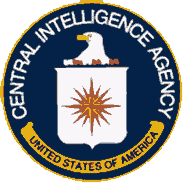
Recognizing the success of testing the U-2 at Area 51, the CIA and the Air Force decided to test all new top-secret military aircraft at Groom Lake. Under the leadership of Werner Weiss, grade GS-15 in the CIA, Colonels Holbury and Slip Slater, USAF increased the size of the facility to accommodate the new Oxcart/A-12 program by lengthening the runway from 5000 feet to 8500 feet and the restricted airspace grew to 20 X 22 nautical miles. Surplus World War II Navy barracks were moved to the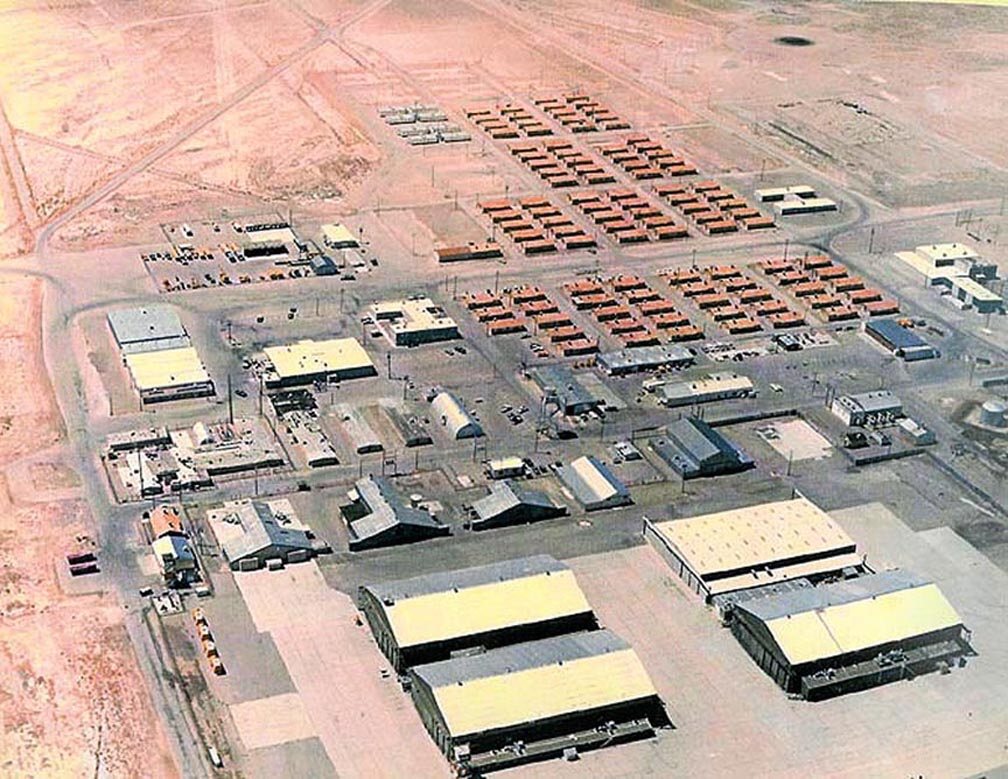 site to furnish billeting for CIA operations. In early 1962 the first A-12 (CIA code-name for the A-12 plane: Article)
site to furnish billeting for CIA operations. In early 1962 the first A-12 (CIA code-name for the A-12 plane: Article) was shipped to Groom Lake. The five specially trained CIA pilots (CIA code-name: Drivers) arrived soon thereafter. On April 26, 1962, the first A-12 Archangel, the most revolutionary plane ever, took to the skies. By the end of 1964 there had been 1,160 flights, totaling 1,616 hours. Eleven aircraft were then available, four of them reserved for testing and seven assigned to the 1129 Special Activities Squadron Detachment.
was shipped to Groom Lake. The five specially trained CIA pilots (CIA code-name: Drivers) arrived soon thereafter. On April 26, 1962, the first A-12 Archangel, the most revolutionary plane ever, took to the skies. By the end of 1964 there had been 1,160 flights, totaling 1,616 hours. Eleven aircraft were then available, four of them reserved for testing and seven assigned to the 1129 Special Activities Squadron Detachment.
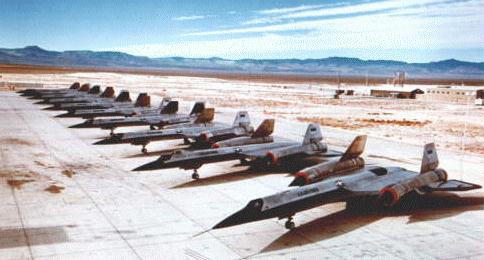
Oxcart aritcles parked at the Ranch
Pilots (Drivers) for the A-12 and YF-12 Articles of Project OXCART had to be of quite extraordinary competence, not only because of the unprecedented performance of the aircraft itself, but also because of the particular qualities needed in men who were to fly intelligence missions. Pilots had to be qualified in the latest high performance fighters, emotionally stable, and well motivated. They were to be between 25 and 40 years of age, and the size of the A-12 cockpit prescribed that they be under six feet tall and under 175 pounds in weight.
Surviving the screening of Air Force files, psychological assessments, physical examinations and refinement of criteria, the pilots were selected to undergo intensive security and medical scrutiny by the Agency before being approached to take employment with the Agency on a highly classified project involving a very advanced aircraft. When the final screening was complete, the pilots selected from the program were William L. Skliar, Kenneth S. Collins, Walter Ray, Alonzo Walter, Mele Vojvodich, Jack W. Weeks, Ron "Jack" Layton, Dennis B. Sullivan, David P. Young, Francis Murray, and Russell Scott. In November 1961, commitments were obtained from the group and arrangements made with the Air Force to effect appropriate transfers and assignments to cover their training and to lay the basis for their transition from military to civilian status. Compensation and insurance arrangements were similar to those for the U-2 pilots.

| Mele Vojvodich | Jack Layton |
| Denny Sullivan | Walter Ray |
| Ken Collins | Jack Weeks |
| Frank Murray | William L. Skliar |

| Louis Schalk | Bob Gilliland |
| James D. Eastham | Bill Park |
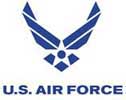
|
|
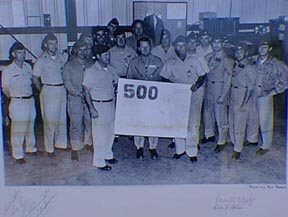 |
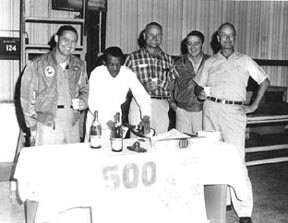 |
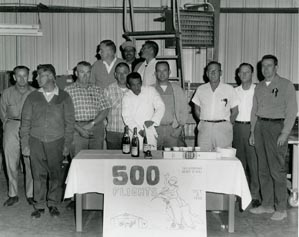 |
| Agency Pilots and Groom Lake Brass | Enlisted Personnel - Groom 1968 |
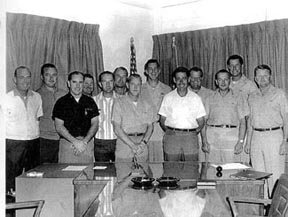 |
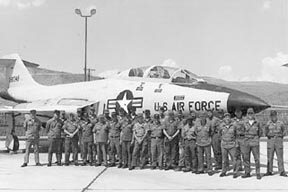 |
 |
 |
The technical aspect of the CIA's Groom Lake special projects activities was contracted by various companies and universities who provided everything from laborers, cooks and maintenance personnel to engineering and technician specialists in radar tracking, cross-section evaluations and telemetry.
|
|
|
Pylons with A-12 Articles mounted for RCS (Radar Cross-Section) Tests
 |
 |
 |
 |
 |
In Summary; the OXCART Program lasted just over ten years, from its inception in 1957 through first flights in 1962 to termination in 1968. This CIA program was highly compartmentalized while at Groom Lake, the players consisting of CIA personnel (the customer), the Air Force 1129th Special Activities Squadron (support), and various CIA contractors for special project operations. The main objective of creating a reconnaissance aircraft of unprecedented speed, range, and altitude capability had been triumphantly achieved. Lockheed produced 15 OXCARTS, three YF-12A's and 31 SR-71's. The 49 supersonic aircraft had completed more than 7,300 flights, with 17,000 hours in the air. Over 2,400 hours had been above Mach 3. Five OXCART were lost in accidents; two pilots were killed, and two had narrow escapes. In addition, two F-101 chase planes were lost with their Air Force pilots during OXCART testing phase.
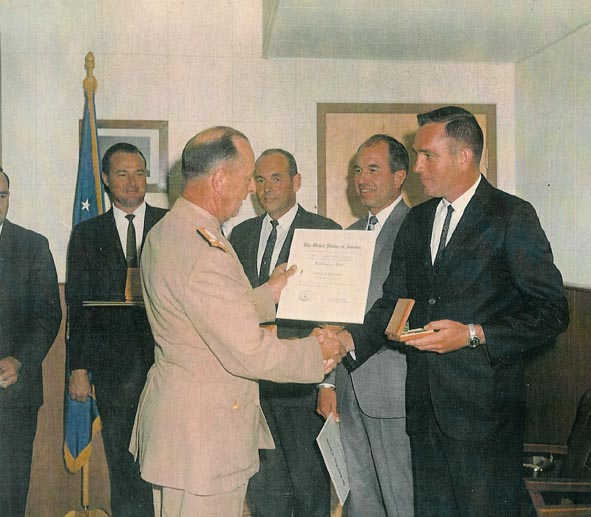 In a ceremony at Groom Lake on 26 June 1968, Vice Admiral Rufus L. Taylor, Deputy Director of Central Intelligence, presented the CIA Intelligence Star for valor to pilots Kenneth S. Collins, Ronald L. Layton, Francis J. Murray, Dennis B. Sullivan, and Mele Vojvodich for participation in the BLACK SHIELD operation. The posthumous award to pilot Jack W. Weeks was accepted by his widow. The United States Air Force Legion of Merit was presented to Colonel Slater and his Deputy, Colonel Maynard N. Amundson. The Air Force Outstanding Unit Award was presented to the members of the OXCART Detachment (1129th Special Activities Squadron, Detachment 1) and the USAF supporting units.
In a ceremony at Groom Lake on 26 June 1968, Vice Admiral Rufus L. Taylor, Deputy Director of Central Intelligence, presented the CIA Intelligence Star for valor to pilots Kenneth S. Collins, Ronald L. Layton, Francis J. Murray, Dennis B. Sullivan, and Mele Vojvodich for participation in the BLACK SHIELD operation. The posthumous award to pilot Jack W. Weeks was accepted by his widow. The United States Air Force Legion of Merit was presented to Colonel Slater and his Deputy, Colonel Maynard N. Amundson. The Air Force Outstanding Unit Award was presented to the members of the OXCART Detachment (1129th Special Activities Squadron, Detachment 1) and the USAF supporting units.
|
CIA pilots Alonzo Walter, David P. Young, and Russell Scott left the program prior to Oxcart becoming operational as Black Shield. |
|
CIA pilot William L. Skliar pursued the YF-12 portion of the Oxcart program and did not transfer to Black Shield for A-12 operations. |
|
CIA pilot Walter Ray was killed during testing of the A-12 at Groom Lake |
Groom Lake/a.k.a. Area 51
 |
 |
 |
 |
 |
 |
 |
Click below for a lot more information about Area 51

![]()
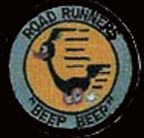 |
 |
 |
 |
 |
 |